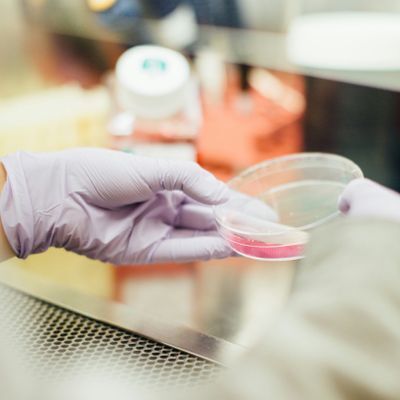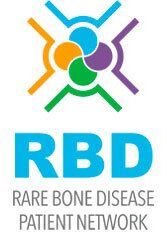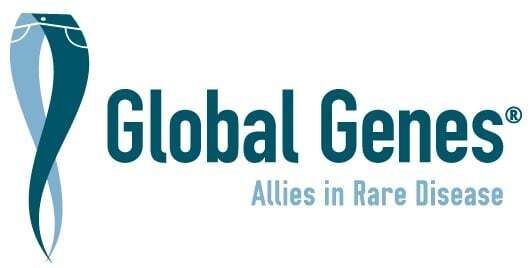
This information was presented by Dr. Jimmy Bennett, MD, PhD, associate professor of pediatrics at University of Washington and Seattle Children’s Hospital, during the 2023 LMI/LGDA International Conference on Complex Lymphatic Anomalies. This conference served as a platform for experts and researchers to exchange insights and advancements in the field of complex lymphatic anomalies, shedding light on the challenges and progress in diagnosing and managing these intricate conditions.
Complex Lymphatic Anomalies (CLAs) are intricate and often baffling medical conditions that affect a diverse range of patients. They can lead to various complications, including pain, compression of adjacent structures, and infections. Diagnosing and managing CLAs have been an ongoing challenge for both medical professionals and patients alike. However, recent breakthroughs in diagnostics, particularly the use of cyst fluid cell free DNA (cfDNA) analysis, have the potential to significantly improve the lives of individuals living with CLAs.
Understanding the Genetic Basis of Lymphatic Malformations:
Lymphatic malformations, including complex lymphatic anomalies, have long been a medical enigma. However, researchers have uncovered the crucial role of the PIK3CA gene in causing these conditions. Activating mutations in this gene initiate a signaling pathway that results in the development of lymphatic malformations. This discovery has opened up new possibilities for potential treatments. Yet, the importance of precise genetic diagnosis cannot be emphasized enough.
A Precise Genetic Diagnosis is Vital:
The significance of a precise genetic diagnosis cannot be overstated, especially for CLA patients. Many treatments for these conditions are still in their early stages, making it crucial to understand the genetic foundations of each patient's condition. It is important to recognize that not all CLAs are the same, and the specific genetic mutations can vary, which ultimately influences the choice of treatment.
Challenges of Genetic Diagnosis:
Obtaining a genetic diagnosis for CLAs presents a set of unique challenges. One major obstacle is the low levels of mutant DNA in samples, making traditional genetic testing methods less reliable. Additionally, the choice of tissue to test is crucial, as various biopsies from the same patient may yield inconsistent results, highlighting the need for a more reliable and less invasive diagnostic approach.
The Promise of Cyst Fluid Cell Free-DNA (cfDNA):
One innovative approach to overcome these challenges is the analysis of cyst fluid cfDNA. Cell-free DNA (cfDNA) is a term used to describe small fragments of DNA that circulate freely in the bloodstream or other bodily fluids, such as urine or saliva, or cerebrospinal fluid. Unlike the DNA found within intact cells, cfDNA is not confined within a cell's nucleus or other cellular structures. This fluid is often abundant in lymphatic malformations and has proven to be a valuable source for genetic analysis. Recent studies, led by researchers like Dr. Jimmy Bennett, have demonstrated the effectiveness of this approach, particularly in detecting the PIK3CA mutation in most cases. Analyzing cyst fluid cfDNA offers a more practical and accurate method for diagnosing CLAs, especially when combined with traditional biopsy methods.
Introducing Spot Seek:
Dr. Bennett introduced "SpotSeq," a novel diagnostic approach based on Droplet Digital PCR (ddPCR) technology. Launched in June of the current year, this approach allows for the accurate and cost-effective analysis of cyst fluid, blood, and fresh tissue samples. It can specifically detect PIK3CA mutations, providing valuable diagnostic information for patients with lymphatic malformations.
Case Example: Dr. Bennett shared a compelling case example to illustrate the importance of accurate diagnosis. A patient with a submandibular neck mass was initially considered a potential lymphatic malformation or plugged salivary glands. However, using SpotSeq, it was determined that the patient had a blocked salivary gland duct, not a lymphatic malformation. This highlights how precise diagnostics can prevent unnecessary treatments and interventions.
In conclusion, the progress in minimally invasive diagnostics for lymphatic malformations is a promising development that could be applied to complex lymphatic anomaly soon. Cyst fluid cfDNA analysis offers a more accurate and personalized diagnostic approach. Combined with innovative tools like SpotSeq, patients can receive better and more effective care, ultimately improving their quality of life.
The Significance for CLA Patients:
This information holds immense significance for individuals living with CLAs where it’s known that genetic information is critical for diagnosis and treatment, but tissue extraction is more invasive. The advent of cyst fluid cell free DNA (cfDNA) analysis and diagnostic methods like "SpotSeq" offers several key advantages for CLA patients:
- Accurate Diagnosis: For CLA patients, accurate diagnosis is a critical first step in their journey to managing their condition. The identification of specific genetic mutations can provide essential insights into the nature and severity of their lymphatic anomalies, allowing for more tailored treatment plans.
- Preventing Unnecessary Treatments: Precise diagnostics help prevent patients from undergoing unnecessary and potentially invasive treatments. Avoiding such interventions not only reduces physical discomfort but also minimizes the emotional and financial burden on patients and their families.
- Improved Treatment Outcomes: By understanding the genetic underpinnings of their condition, CLA patients can receive more targeted and effective treatments. This may lead to better treatment outcomes, improved symptom management, and an enhanced quality of life.
- Reduced Invasiveness: Minimally invasive diagnostic methods, such as cyst cfDNA analysis, are less invasive and more comfortable for patients. This approach reduces the need for surgical biopsies and allows for quicker recovery times.
- Cost-Effective Diagnostics: The introduction of cost-effective diagnostic tools like “SpotSeq” makes advanced diagnostic techniques more accessible to CLA patients, regardless of their geographic location or healthcare resources.
In summary, the recent advancements in diagnostic techniques have the potential to significantly improve the lives of CLA patients. These innovations offer hope for more accurate diagnoses, personalized treatment plans, and better patient care. By providing a deeper understanding of the genetic basis of these conditions, CLA patients can look forward to a brighter and more hopeful future.










